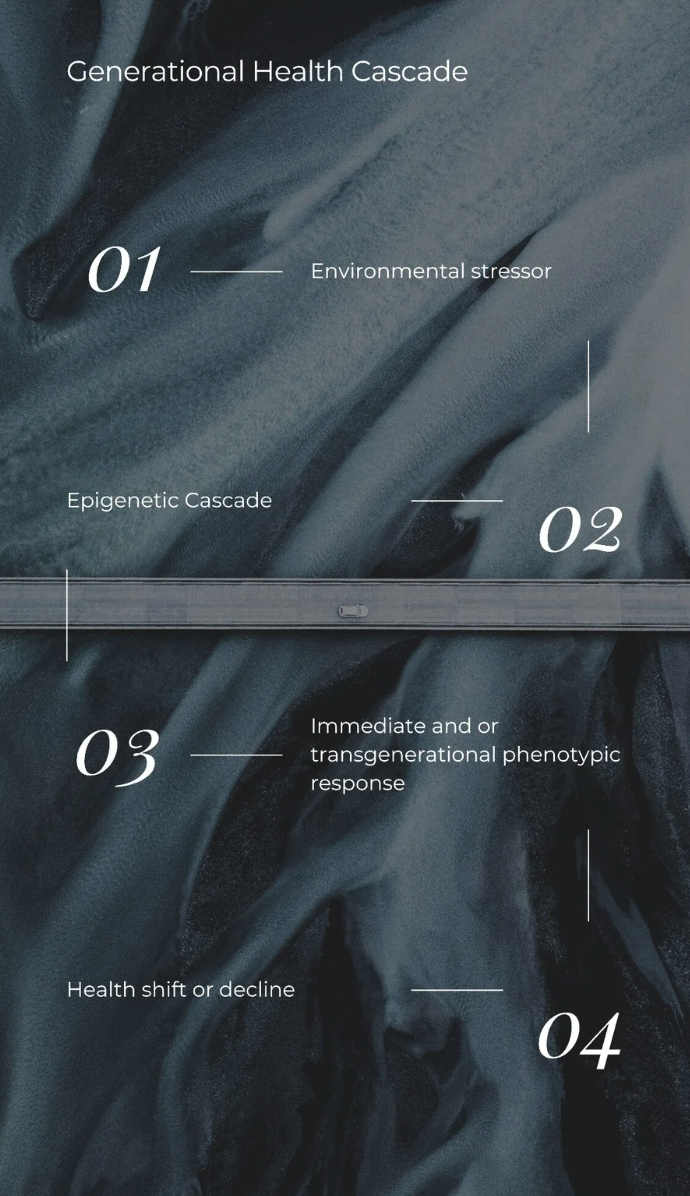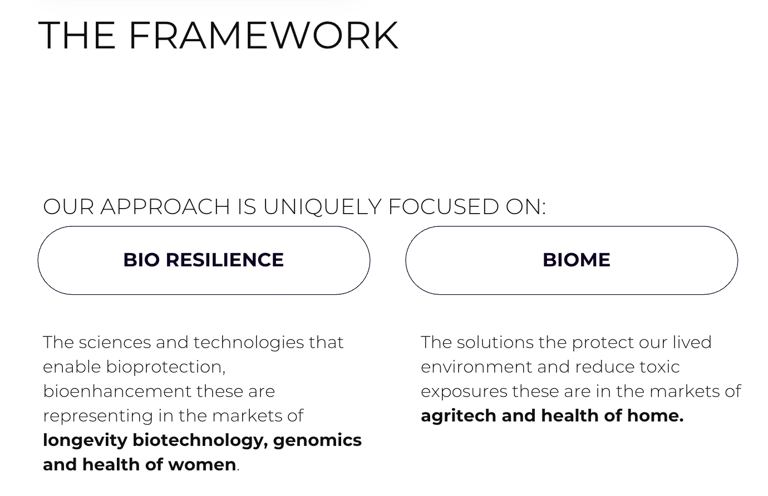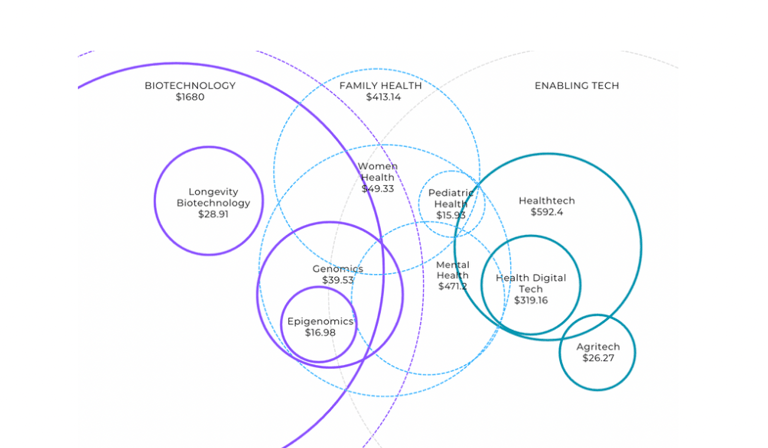PERSPECTIVES
Pioneering the Category of Generational Health

UNDERSTANDING THE PROBLEM
BIOLOGICAL, MENTAL AND ENVIRONMENTAL DISRUPTORS ARE MEASURED TO EFFECT HUMAN HEALTH GENERATIONALLY




EXAMPLE: A GENERATIONAL CASCADE
An example is the focus on the growing market of epigenetics— a primary cascade re-shaping multi-generational biology and health outcomes.
Epigenetics are changes at the level of our DNA that affect the way our genes work and this can extend to future grandchildren.
ASSESSING THE SOLUTIONS
A UNIQUE GH APPROACH


REPRESENTING INTERSECTIONAL MARKETS


Critical markets are intersectional.
All Values are in Billions
2025 GENERATIONAL SIGNALS
hundreds of conversations with stakeholders and deal reviews in Generational Health, reveal 10 key signals for 2025:
Longevity wins with broader applications around GLP1, GIPs, and the like. They evolve and also distract, reducing focus from other major categories. Yet exposing new business approaches and stratification across indications for chronic disease and inflammation is beneficial.
Adventures in epigenetics, linking environment to health at a cellular level, are developing and getting more attention from researchers and investors alike as mechanisms of action become clearer.
Toxicity management is accelerating, spurred by shifting policy. The processes for Post-Market Assessment of chemicals in food continues to create disruptions in quality & supply chains. propelling opportunity in biomaterials, food safety, and toxicity reduction.
Brain and mental health is boosted by novel pharmacology, AI supportive tech and better integration of behavioral health services. The health risk grows in youth.
AI and Gen-AI appear more “same” than “new” for investors, due to lack of data models and data sharing governance.
Fewer innovators are advancing data quality and governance for better progress in multivariate health decisions.
Biome, the space around us, advances within the Generational Health thesis. Innovations in safe and smart home design and new biomaterials are key drivers.
Women’s health surges, and is an immediate opportunity for longevity, yet remains underfunded.
The silver tsunami rises and the multivector opportunity in aging grows. Workforce policies, like in Japan, emphasize productivity. The public sector focuses budgets on workforce, fertility, and technology for longevity and reproductive capacity.
Country competitiveness rises with national security concern, forcing the pace of regional development of treatment and need for platform medicines. Shared access is unlikely due to conflicts, politics and lack of certainty across supply chains and borders.
